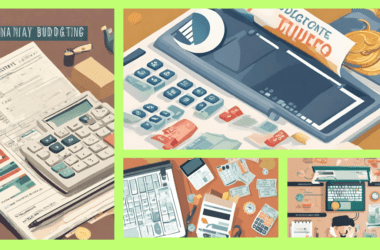In the world of personal finance, managing money efficiently is key to achieving financial goals and stability. One method that has stood the test of time is the Envelope System, a tangible and hands-on approach to budgeting. Let’s dive into the details of this system, exploring its types and how it can transform the way you handle your finances.
Introduction
What is the Envelope System?
The Envelope System is a budgeting technique that involves using physical envelopes to allocate cash for specific spending categories. Each envelope represents a different expense, such as groceries, entertainment, or dining out. Once the cash in an envelope is depleted, spending in that category stops until the next budgeting period.
Benefits of the Envelope System
Financial Discipline
One of the primary advantages of the Envelope System is the discipline it instills. With a predetermined amount of cash for each category, overspending becomes more challenging, promoting financial responsibility.
Controlled Spending
By relying on cash, individuals are forced to stay within their budgetary limits. Unlike credit or debit cards, physical money provides a tangible representation of available funds, reducing the temptation to exceed the budget.
Easy Tracking
The Envelope System simplifies tracking expenses. A quick glance at the envelopes reveals how much money remains for each category, eliminating the need for complex financial software or apps.
Types of Budgets
Zero-Based Budgeting
Zero-Based Budgeting requires allocating every dollar of income to specific categories, leaving no money unassigned. This method ensures that every aspect of your financial life is considered and planned for.
50/30/20 Budget Rule
The 50/30/20 rule allocates 50% of income to necessities, 30% to discretionary spending, and 20% to savings. Integrating this rule with the Envelope System helps maintain balance in spending and saving.
Cash-Only Budgeting
Using only cash for all transactions, Cash-Only Budgeting is a simplified version of the Envelope System. It promotes awareness of spending habits and eliminates the risk of accumulating credit card debt.
Implementing the Envelope System
Setting Budget Categories
Begin by identifying spending categories relevant to your lifestyle. Common envelopes include groceries, utilities, transportation, and entertainment. Tailor the categories to align with your priorities and financial goals.
Allocating Cash to Envelopes
Distribute your budgeted amounts into the corresponding envelopes. Be diligent in sticking to the allocated amounts, and avoid borrowing from one envelope to fund another.
Monitoring and Adjusting
Regularly assess your spending patterns and adjust the amounts in each envelope as needed. Flexibility is key to making the Envelope System work for your unique financial situation.
Success Stories with the Envelope System
…
Continue developing the article following the outlined structure. After the conclusion, include the following:
Conclusion
In conclusion, the Envelope System offers a tangible and effective approach to budgeting, promoting financial discipline and controlled spending. By understanding its various types and how to implement them, individuals can take charge of their finances and work towards their financial goals.
FAQs
- How do I handle unexpected expenses with the Envelope System?
- Can I use the Envelope System for long-term financial goals?
- Is the Envelope System suitable for small businesses?
- What if I don’t have a fixed income?
- Are there any risks associated with the Envelope System?

